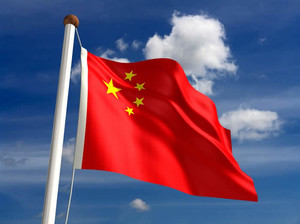Market access barriers remain the main challenge for generics in China, according to a presentation by Xianghong Shao given at the International Generic Pharmaceutical Alliance (IGPA)’s 16th Annual Conference, which was held in Brussels, Belgium, 9–11 December 2013 [1].
The generics market in China
Home/Reports
|
Posted 04/04/2014
 0
Post your comment
0
Post your comment

The Chinese pharmaceuticals market is expected to become the second biggest market in the world in 2014 and will contribute 31% of global pharmaceuticals market growth between 2012 and 2016. Factors influencing China’s growth include healthcare reform, which intends to provide universal healthcare to the country’s 1.3 billion residents [2], and the country’s increasingly wealthy and ageing population. In 2020, China is forecast to spend US$1 trillion on healthcare.
Under-diagnosis of diseases and their treatment present a significant challenge for the country and a significant opportunity for pharmaceutical companies. In China, there are an estimated 247 million people with dyslipidemia (an abnormal amount of lipids, e.g. cholesterol and/or fat, in the blood), but only 5% are diagnosed and treated. Whereas for depression there are estimated to be 89 million Chinese suffering from the condition, but only 3% are diagnosed and treated.
Most prescription drugs in China are sold through hospital pharmacies (78%), with only 22% being sold via retail pharmacies. Generics make up the vast majority of the prescription drugs sold in China. In 2011, generics accounted for 86% of prescriptions and 75% by value. In China, off-patent originator and generic drugs account for > 90% of the total pharmaceuticals market share (volume), with a compound annual growth rate (CAGR) of 24% in the last five years. This makes China’s off-patent originator and generic drug market the second largest in the world by volume.
Market access remains the big challenge for generics launched in China. Just to get through the regulatory approval stage takes on average four years in China compared to only two and a half years in the US. Then follow procedures for pricing approval, provincial bidding and listing on hospital formularies, which can take on average five months, eight months and 12+ months, respectively.
Related article
China’s SFDA to fast-track high-priority generics
References
1. Xianghong S. China generic market overview. 16th Annual IGPA Conference, Brussels, Belgium, 9-11 December 2013.
2. GaBI Online - Generics and Biosimilars Initiative. China’s Healthcare reform in 2010 [www.gabionline.net]. Mol, Belgium: Pro Pharma Communications International; [cited 2014 Apr 4]. Available from: www.gabionline.net/Policies-Legislation/China-s-healthcare-reform-in-2010
Permission granted to reproduce for personal and non-commercial use only. All other reproduction, copy or reprinting of all or part of any ‘Content’ found on this website is strictly prohibited without the prior consent of the publisher. Contact the publisher to obtain permission before redistributing.
Copyright – Unless otherwise stated all contents of this website are © 2014 Pro Pharma Communications International. All Rights Reserved.
Guidelines
New guidance for biologicals in Pakistan and Hong Kong’s independent drug regulatory authority
Canada poised to remove requirement for Phase III trials for biosimilars
Policies & Legislation
ANVISA tackles 24-month backlog in biologicals post-registration petitions
US EO: delivering Most-Favored-Nation Prescription Drug Pricing to American patients
Advancing biologicals regulation in Argentina: from registration to global harmonization

Home/Reports Posted 10/10/2025
China-to-West pharma licensing deals surge in 2024 amid innovation push

Home/Reports Posted 22/05/2025
The best selling biotechnology drugs of 2008: the next biosimilars targets








Post your comment